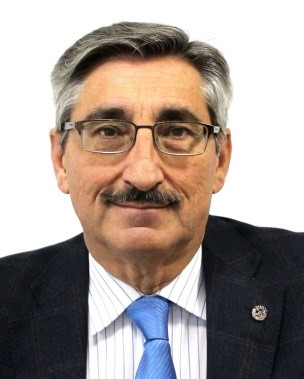Francisco Trinidad

Bio
Francisco Trinidad holds a PhD from the University of Madrid. In 1977, he joined the Tudor group and was promoted as Research Manager, and later, Industrial Development Director. Following Exide’s acquisition of the company, he was assigned several senior R&D management roles and finally retired as Exide´s Battery Technology Director in 2020. Along more than 4 decades of battery R&D experience, he has been the author of 24 articles, 14 international patents and numerous presentations in battery conferences. Current consultant activities are dealing with new technical approaches, like the use of different additives for positive and negative active materials, as well as determine the added value of alternative battery technologies for new automotive and industrial applications.
Cost and charge efficient long cycle life energy storage applications are expected to be one of the fastest growing battery markets in the coming years. Lead batteries are facing significant challenges to comply with customer expectations, mainly in terms of cost, charge efficiency and cycle life, that need to be overcome to be present in this market. The most critical factor is to reduce the Total Cost of Energy Storage (TCOES) by reducing the initial investment (acquisition cost), reduce or eliminate maintenance, and increase calendar life. The cost of standard flooded batteries is relatively low, but maintenance needs, durability and cycle life doe not always fulfill customer expectations. On the other hand, maintenance free designs (gel or AGM) need to reduce TCOES and improve charge efficiency to be fully competitive in energy storage applications. This presentation will focus on the latest developments, some of them successfully applied in automotive batteries, but lacking sufficient maturity level for long life industrial applications. Several strategies to cope with energy storage requirements will be discussed, such as reducing weight of key components (electrolyte, grids and intercell connectors), improving active material efficiency (conductive additives or porosity enhancers) and increasing charge efficiency (new carbon blends and expander formulations). New components (lighter grids, bipolar plates), in combination with conductive materials (carbon, silicon or titanium), look attractive to reduce weight and improve life, but need further development and real test results in relevant industrial environments. A shorter term approach could be to lever the important developments made for other battery chemistries (mainly Li-ion), as conductive (synthetic graphite, carbon nanomaterials) or microstructural (tin, silicon) compounds for the positive and negative electrodes. New data on the use of different materials, and how these additives can help to address the most important challenges of lead batteries in industrial energy storage applications, will be presented.


